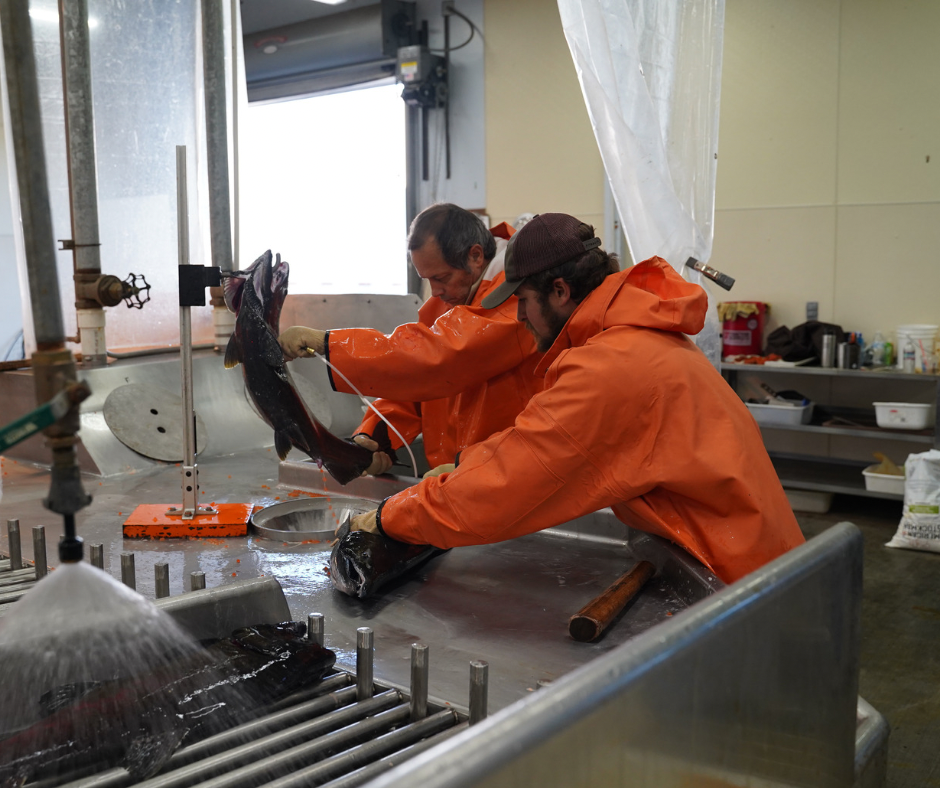California Department of Fish and Wildlife to Transfer 5 Million Salmon Eggs to United States Fish and Wildlife Service

Golden State Salmon Association has learned that the California Department of Fish and Wildlife is expected to transfer up to five million Chinook salmon eggs from the Nimbus and Mokelumne state fish hatcheries to the Coleman National Fish Hatchery on Battle Creek, which is operated by the U.S. Fish and Wildlife Service. An official agency announcement has not yet been released so details are subject to change.
This State and federal fishery management agreement, applauded by Golden State Salmon Association, responds to a disastrous loss of salmon in the upper Sacramento Valley that failed to provide the Coleman Hatchery with enough salmon eggs to reach its reproduction target. Once abundant salmon runs in the upper Sacramento Basin have been wiped out by water policies enacted by the Trump Administration and embraced by California Governor Gavin Newsom.
Current estimates show that only about 100 fall-run Chinook salmon redds, or spawning nests where eggs are buried in river gravel, were created in the upper Sacramento River. This is an area that regularly had tens of thousands redds until recent years.
The Coleman Hatchery would normally harvest 15 million salmon eggs from adult salmon that return to spawn in Battle Creek, where the hatchery is located (Anderson, CA). This year the hatchery was only able to harvest about 9 million eggs from an estimated return of only about 5,000 salmon to Battle Creek. Until recently, Battle Creek regularly saw returns of tens of thousands of adult salmon. The transfer of approximately five million salmon eggs is expected to help the Coleman Hatchery reach their annual goal. All the fish raised from the transferred eggs will be trucked to San Francisco Bay release sites.
“Fishery managers are doing the best they can with the disastrous native salmon run they’re inheriting from water managers who have shunted water from salmon rivers to politically connected industrialagriculture operations,” said Scott Artis, executive director of Golden State Salmon Association.
“GSSA thanks staff running the Coleman Hatchery and CDFW personnel that oversee the state’s salmon hatcheries for their incredibly hard work to try to keep salmon in California’s future,” said Artis.
The news of the emergency egg transfer comes following the historic loss of all salmon fishing in California in 2023 and what’s shaping up to be at least another year of no fishing, based on inadequate numbers of adult salmon returning to Central Valley rivers to reproduce.
“Millions of dollars of losses are being borne on the backs of commercial and recreational salmon fishermen and women and all the businesses and communities that service the salmon industry,” said John McManus, Science and Policy Director and Board Member of Golden State Salmon Association. “We’re grateful to the state and federal fishery staff who continue to tirelessly work to protect California’s salmon.”
The hatchery egg transfer is also playing out against a backdrop of other emergency actions water managers have forced State fishery officials into including the capture of juvenile spring-run salmon now facing extinction. In October 2023, the State announced a condor-style plan to bring these wild salmon into captivity to preserve their genetics from being lost to extinction. Spring-run salmon reproduce in Sacramento Valley tributaries of the Sacramento River where they survive until they make the trip to sea. When they leave the creeks and enter the Sacramento River to go to the ocean, they die in the low, warm river flows left over after giant portions of the river are diverted to Sacramento Valley agriculture.
